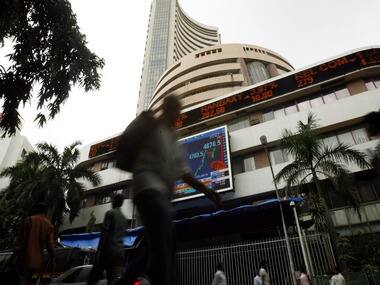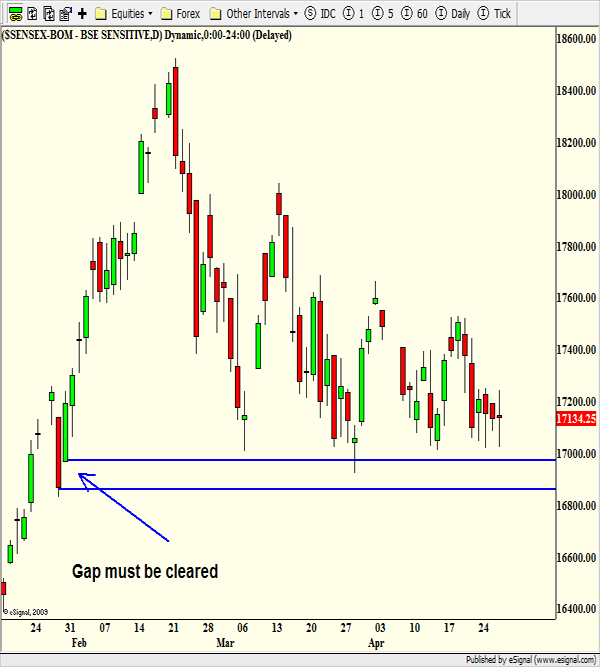The Indian equity markets and the rupee shrugged off Standard and Poor’s downgrade with the currency pausing its depreciation and stocks falling only marginally.
One would have expected the stock market and the rupee to fall sharply given the downgrade, but no such thing happened. S&P is generally behind the curve and the markets react much earlier than the rating agencies. And this has been proven time and again. The latest example is the price action of the Sensex and the Indian rupee.
[caption id=“attachment_291770” align=“alignleft” width=“380” caption=“Reuters”]
 [/caption]
[/caption]
The Sensex has been falling since early February this year, discounting the economic and fiscal ailments of the country. In the middle of February, the Sensex peaked a little above 18,400 and has since fallen to 17,134, as of last Friday, which is more than a 1,000-point drop. In fact, after the S&P action, the Sensex did not see any major move.
The same is true of the Indian rupee. After appreciating to 48.50 levels in February, the US dollar-Indian rupee (USD-INR) pair depreciated and peaked at 52.85 last week. After the S&P announcement, the pair did not make a new low as one would have expected but moved in a narrow range of 52.40 and 52.80
So what’s happening? Have the Indian equity and currency markets lost all rationality? That is the question asked by people making news-based investment decisions. And a majority of retail investors make decisions based on news - which is one of the biggest errors one can make. Journalists are the penultimate people to know important news and the last ones to know are ordinary investors. The big investors who move markets are already taking action much before we know it.
For instance, a recent report in The Wall Street Journal stated that “FII equity inflows so far in April total just $171.8 million, down from more than $5 billion in February.” So the FIIs already knew the market trends before the reporter or retail investors did, and the rupee and Sensex were already reacting to it. The FIIs, who are connected to markets, knew the circumstances that led to the S&P action well in advance and were bearish. So by the time the S&P announced the rating decision the big investors were already light on their holdings due to which there was not much movement in markets.
So what should retail investors who don’t have early access to information do? They must study charts to identify areas of demand and supply imbalances. When supply exceeds demand, prices drop, and vice versa. The easiest way to see high demand areas is to look where prices turned to rally higher in the past, and the high supply areas are where prices turned to fall lower.
This is the first step of identifying supply-demand imbalances and we will go into other steps in future articles. At the very least one should never buy in a supply area or sell in a demand area.
Going back to the market’s reaction to the S&P rating action, the rupee and the Sensex did not slide as both are near demand areas. Last week we had mentioned that the rupee faces a lot of demand in the 53 area against the dollar. Once the USD-INR pair reached 52.85 on Tuesday it has not been able to go lower as there is huge demand from 53 all the way to 53.70. That was the all-time low of the rupee from where a flood of demand pushed the currency all the way up to the 48.50 level in a month. So unless the 54 level is broken the rupee will not depreciate no matter what S&P throws at it.
We had also written about the demand area on the Sensex in previous articles. The demand area is the price gap in the Sensex shown on the chart**.**
[caption id=“attachment_291768” align=“alignleft” width=“600” caption=“A price gap happens when the opening price of a day is higher or lower than the closing price of the previous day.”]
 [/caption]
[/caption]
A price gap happens when the opening price of a day is higher or lower than the closing price of the previous day. When there is extreme demand, prices open much higher than they closed the previous day. That’s what happened to the Sensex on 31 January when it opened at 16,965 after closing at 16,863 on the previous day.
On the chart you’ll see two horizontal lines with the upper one starting on the day prices opened higher and the lower one showing where the prices closed the previous day. Given the high demand in the area you’ll notice that prices have come down to gap many times but never closed below it. So unless prices fall below the gap the Sensex will not go lower.
What the rupee and the Sensex did last week in the face of the S&P’s rating decision shows that the markets dance to a different tune and the news media is not the music director. It is important to identify demand and supply imbalance levels in the market to be a profitable investor.
George Albert is Editor, www.capturetrends.com
George Albert is a Chicago-based trend watcher and edits www.capturetrends.com
)